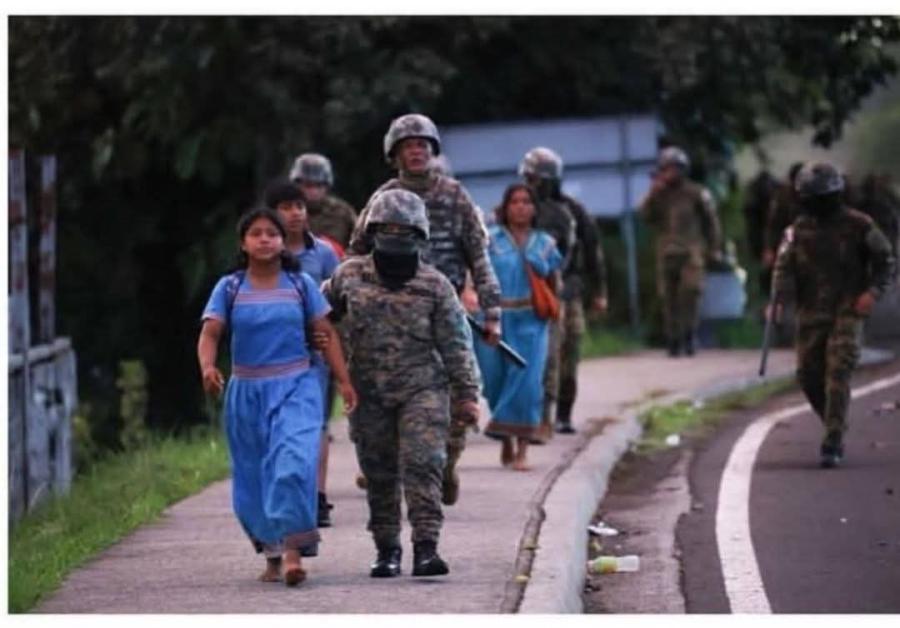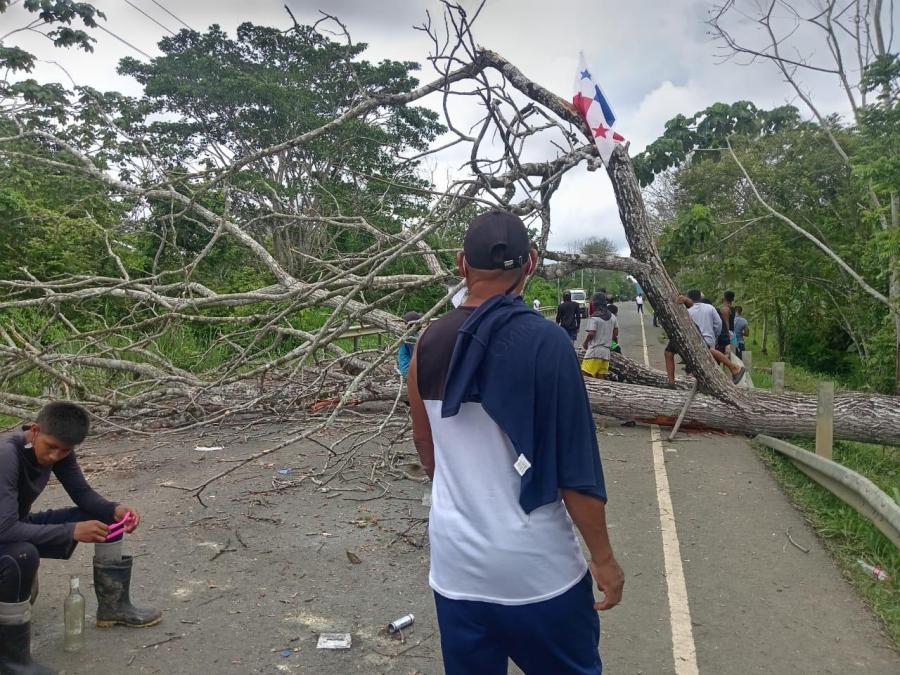From 1982-83, Philippe Bourgois examined the relationship of Guaymi workers of the Chiriqui Land Company's Bocas del Toro Division, a 7,000-hectare complex of banana farms in northern Panama, to the union movement. Owned by United Brands, a transnational conglomerate headquartered in New York City (formerly the United Fruit Company of Boston), the Bocas Division employs a plethora of different ethnic and national groups. The company has so rigidly hierarchized these groups in order to defuse a potentially powerful union movement that apartheid laws might as well exist. Economically exploited as unskilled agricultural laborers and racially ridiculed, Guaymi workers have been unable to effectively organize themselves and seek alliance with other ethnic groups. The worst exploitation is through the use of hazardous pesticides. The following report is excerpted from CS Report No. 19, now in press.
The most dramatic form of exploitation of Guaymi workers is in the realm of occupational safety and health. Guaymi have a different conception of health care and the causes of illness than the average worker. Many have never seen a doctor or visited a medical clinic prior to coming to the plantation. Doctors on the plantation told me that many Guaymi do not seek routine medical attention; they arrive at the clinic only in emergencies. Furthermore, they are unaware of their legal rights for sick pay and disability insurance as protected by the Panamanian labor code.
Sick Workers Discarded
In the 1950s, the Chiriqui Land Company regularly fired debilitated Guaymi by merely paying for their passage back to the mountains. The archives of the company's Medical Department are full of doctors' reports discharging unhealthy workers:
This is to advise that Chali Village Chio, 47 years, Guaymi Indian of Farm 61, was found to suffer from progressive blindness due to extensive chorioretinitis in the left eye. He is no longer able to work. He was advised to return to Cricamola.
Healthy new workers continually replace the steady stream of discarded sick and disabled workers. For example, the company paid a labor contractor $13.50 for the "return of 27 sick Indians" to Cricamola, and $60 for the transport of 120 healthy ones back to the plantation on the same receipt. Apparently the situation was worse in the Armuelles Division where there was more intensive use of the "Bordeaux mixture" (copper sulfate), a pesticide against the Sigatoka leaf fungus. The job of spraying these pesticides from a handpump fell exclusively to Chiriqui Guaymi workers. They were not provided with protective goggles and, according to the son of a Latin foreman who grew up in the Armuelles, it was not uncommon to see blind Guaymi, whose retinas had been burned by the copper sulfate spray, begging in the streets.
Nematicides Poison Guaymi
Since the advent of the improved varieties of bananas in 1961, which require more systematic chemical inputs than the former Gros Michel variety, the role of Guaymi in dispensing the often hazardous new fertilizers and pesticides became even more prominent. The most dangerous pesticides in banana production today are the nematicides (Mocap and Nemacur), which kill the organisms in the soil that attack the root of the banana plant. During my period of fieldwork, at least two workers died from nematicide poisoning and several were seriously debilitated. One was in the hospital vomiting blood, and several others were recuperating slowly from overexposure.
The long-term effects of these nematicides are poorly understood. Several studies correlate nematicides to sterility. One nematicide, DBCP, was prohibited by law following a protest strike in Bocas in the late 1970s after several workers had died from dispensing it. The head of the National Health Service for Bocas del Toro Province told me that studies proving that the pesticides caused sterility "had to be hushed up" as a "sacrifice for the good of the national economy."
Typically, therefore, the vast majority of the workers who dealt with nematicides were Guaymi. It was one of the few tasks where one would occasionally encounter a Guaymi foreman or assistant foreman in charge. A Latin foreman responsible for a pesticide squad told me that normally with nematicides they try to rotate the workers every other week, "but sometimes with these cholos you just forget, and then they get sick on you." Another foreman in charge of a squad of Guaymis who spread Gramoxone, an herbicide, responded almost identically, "If you get careless and forget to rotate them, the next thing you know the damn cholo's bleeding at the nose all the time, and you gotta pay for his sick care for the next coupl'a weeks."
Guaymi Perform Most Hazardous Jobs
Another Guaymi-dominated task involving extensive exposure to hazardous chemicals is that of signal man (banderista) to the airplanes which dump "cocktail mix" (Chlorotlalonil and Dithane), a Black Sigatoka pesticide, on the entire plantation once a week. I noted only one Latin signal man out of the approximately twenty men who perform the task regularly. Not coincidentally, this Latin (who was actually half Guaymi and half Nicaraguan Latin) was known as a grumbler. Every time I spoke with him, he took the opportunity to complain of the inadequacy of the goggles and other protective equipment the company provided. He was also concerned about the long-term hazards of his job when the oldest man in his crew, who had been working as a flag bearer for many years, died of stomach cancer.
Guaymi also dominate the fertilizer squads. Foremen explained that Amerindians are not burnt by the chemical fertilizers when they spread them since Amerindian skin is thicker. More sophisticated company officials (including the superintendent of the Sixaola District) admitted that the chemicals burnt the Guaymi just like everyone else, but that "they just do not care [no hacen caso]." When asked why the company did not provide gloves to protect the hands and wrists of the workers spreading fertilizer, the superintendent claimed that even if you gave gloves to Guaymi workers, they would not wear them. Guaymi workers on the fertilizer squads showed me their raw burns and old scars (generally on the underside of their arms), obtained from handling the chemicals without proper protection. They said they had requested gloves to no avail.
Perhaps the best concrete illustration of the advantage to management to use Guaymi rather than Latin laborers for pesticide dispensing was the work stoppage that occurred in the Sixaola District when Guaymi were phased out of operations on the Costa Rican side of the division and the task of herbicide control was assigned for the first time to an all-Latin crew. On the very first day several workers were hospitalized with severely burnt groins when the rusted dispensing machines strapped to their backs leaked all over them. The rest of the sprayers refused to continue working with the deteriorated equipment until the company purchased a new set of backpack pesticide dispensers.
Article copyright Cultural Survival, Inc.


